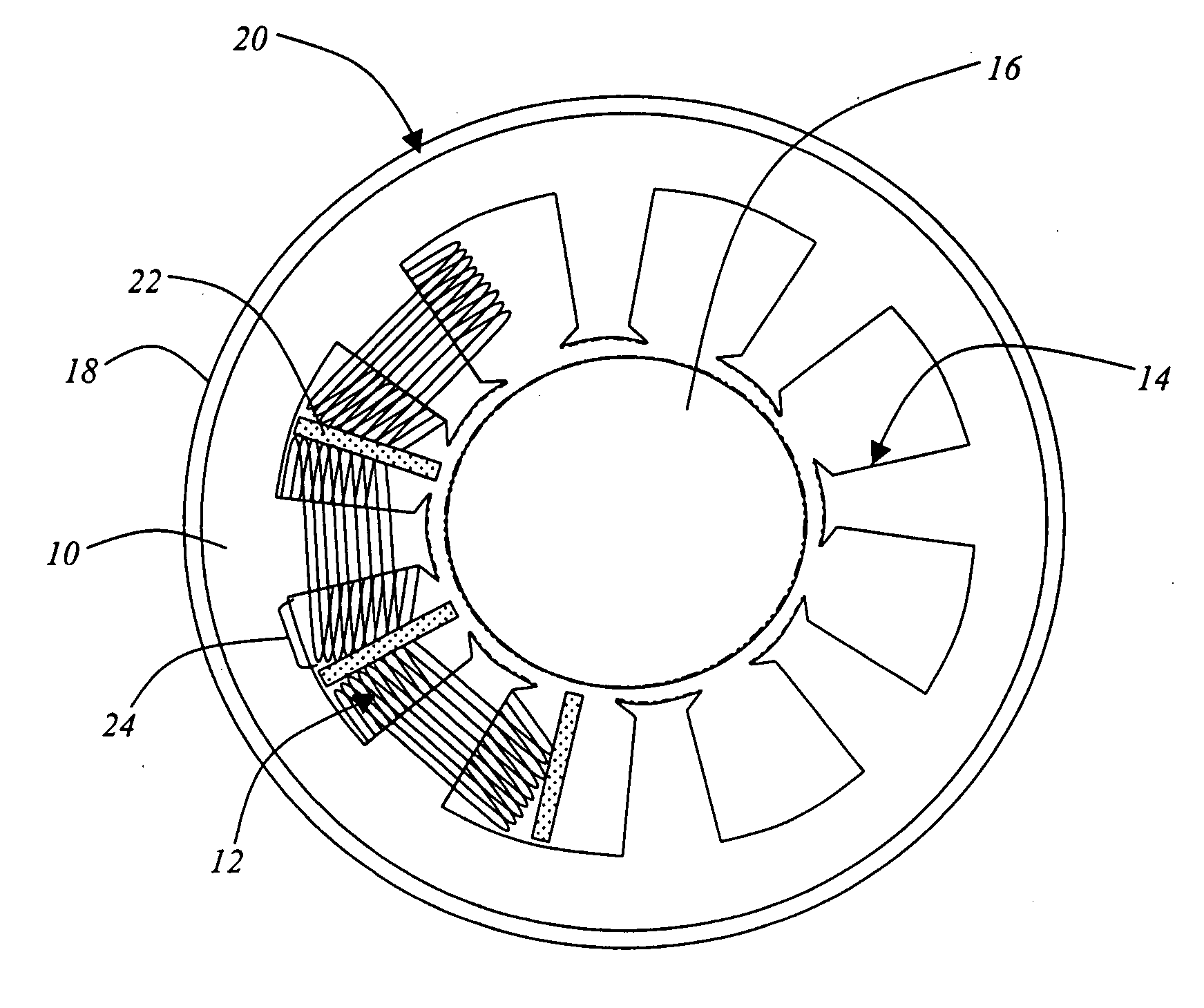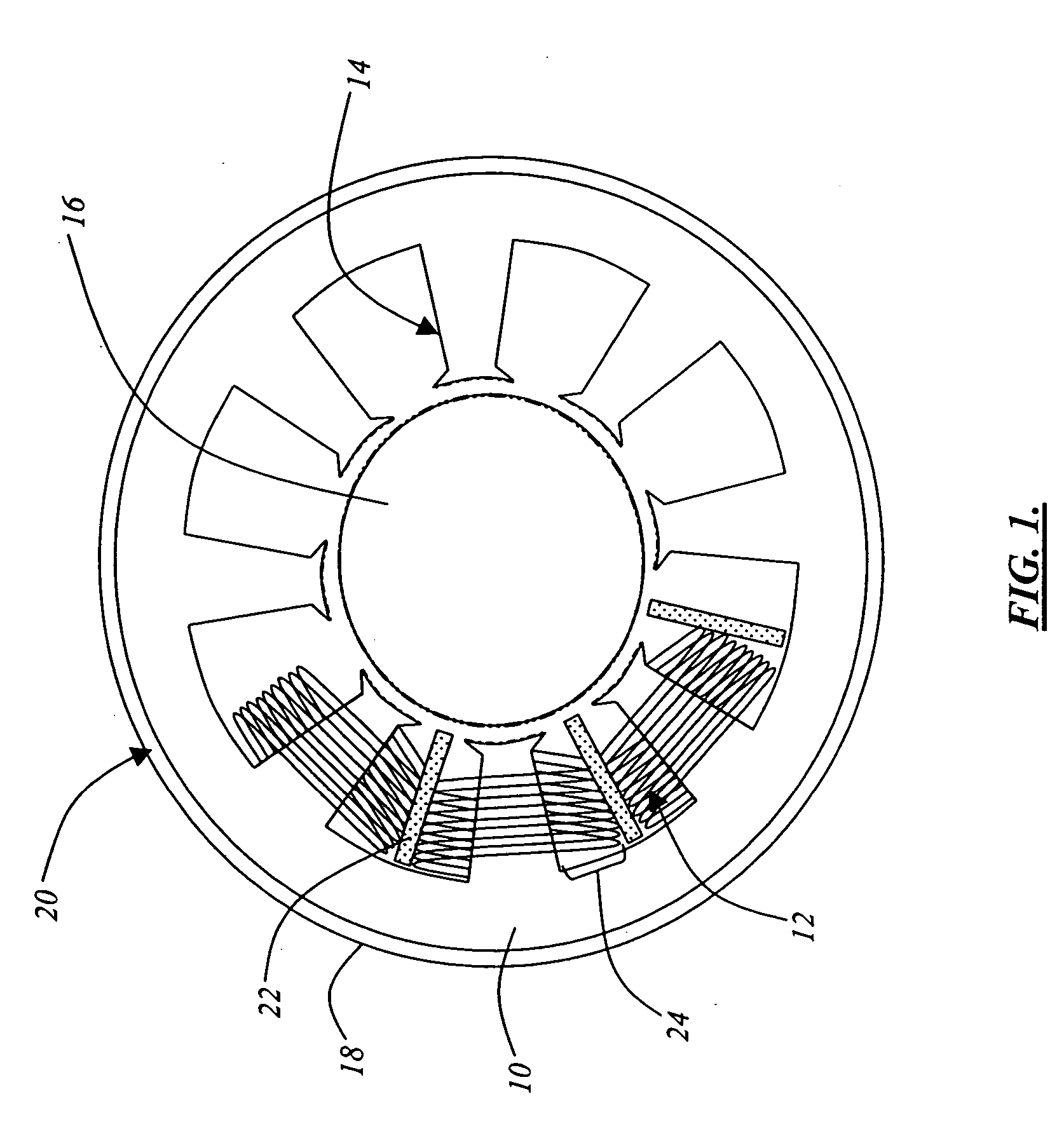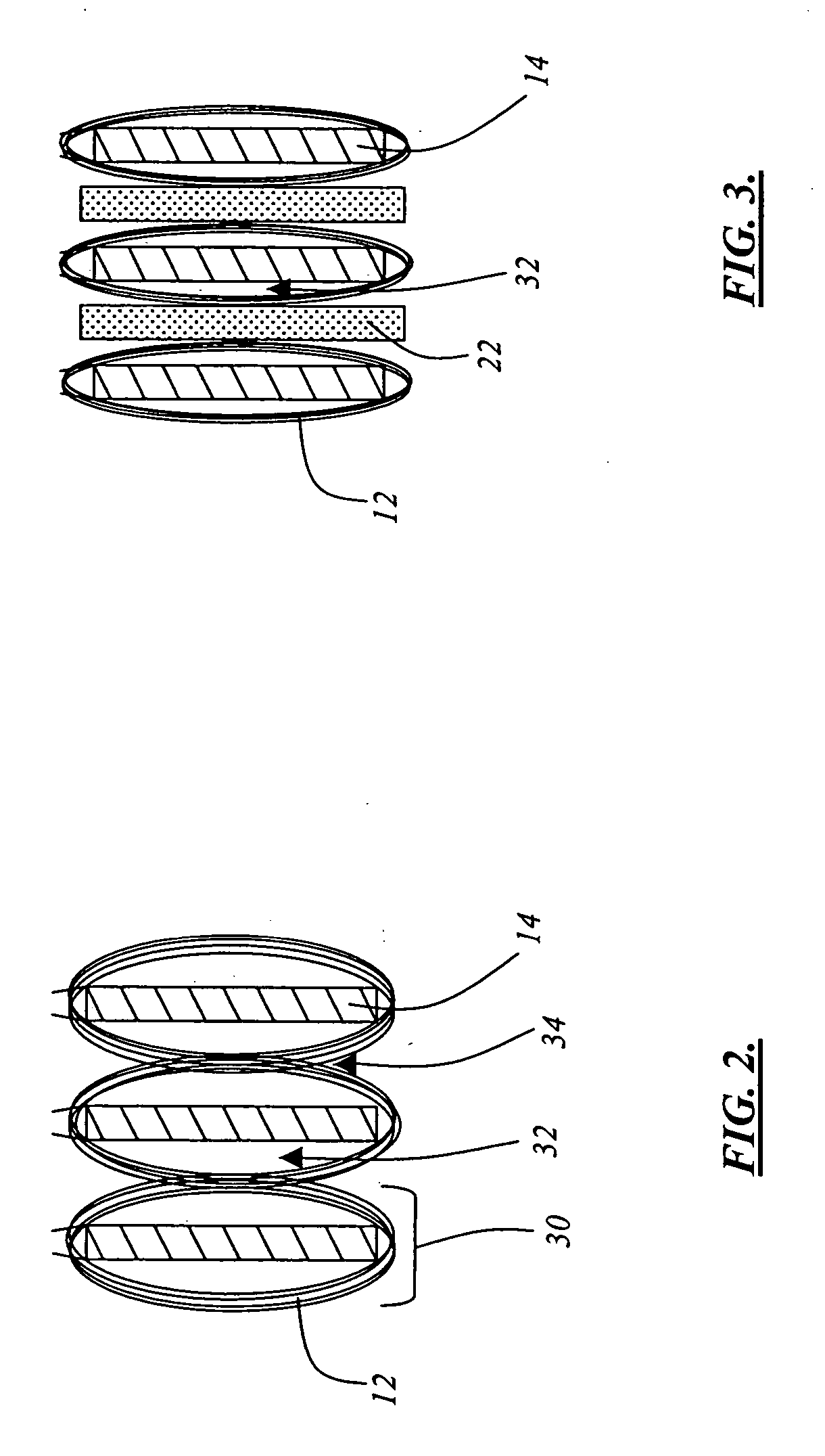Methods and systems for electric machines having windings
- Summary
- Abstract
- Description
- Claims
- Application Information
AI Technical Summary
Benefits of technology
Problems solved by technology
Method used
Image
Examples
Embodiment Construction
[0025] As required, detailed embodiments of the present systems and methods are disclosed herein, however, it is to be understood that the disclosed embodiments are merely exemplary of the systems and methods that may be embodied in various and alternative forms. Specific structural and functional details disclosed herein are not to be interpreted as limiting, but merely as a basis for the claims and as a representative basis for teaching one skilled in the art to variously employ the present systems and methods.
[0026] Referring to FIG. 1, shown is an end-on schematic view of an electric machine, taken in partial cut-away, showing a stator 10 that includes a plurality of spacers 22 (which may be of an electrically insulative and thermally conductive material) disposed between adjacent windings 12 on a plurality of stator teeth 14. The stationary housing containing the coil-wound poles establishes the stator 10. In one embodiment, the stator is at least partially formed from iron. A...
PUM
 Login to View More
Login to View More Abstract
Description
Claims
Application Information
 Login to View More
Login to View More - R&D
- Intellectual Property
- Life Sciences
- Materials
- Tech Scout
- Unparalleled Data Quality
- Higher Quality Content
- 60% Fewer Hallucinations
Browse by: Latest US Patents, China's latest patents, Technical Efficacy Thesaurus, Application Domain, Technology Topic, Popular Technical Reports.
© 2025 PatSnap. All rights reserved.Legal|Privacy policy|Modern Slavery Act Transparency Statement|Sitemap|About US| Contact US: help@patsnap.com



